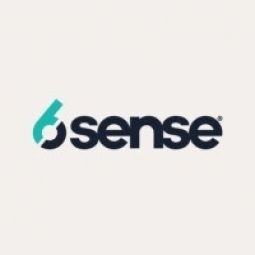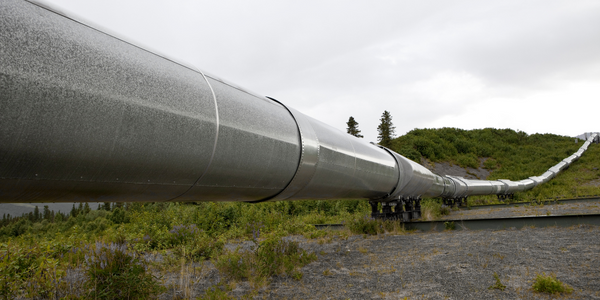Technology Category
- Application Infrastructure & Middleware - API Integration & Management
- Platform as a Service (PaaS) - Application Development Platforms
Applicable Industries
- Healthcare & Hospitals
- Oil & Gas
Applicable Functions
- Procurement
- Sales & Marketing
Use Cases
- Chatbots
About The Customer
PTC is a global software company that is transforming how companies create, operate, and service products. The company recently built a unique martech stack, featuring 6sense, Drift, and People.ai, which revolutionized its ability to identify, connect with, and pursue net-new business. This has led to faster and clearer identification of prospects, connection with accounts, research on buying stages, information on account needs and interest, and evaluation of new and existing pipeline.
The Challenge
PTC was in search of a solution that could combine account-intent programs with AI platforms. The goal was to deliver a customer-centric digital experience that provides value-led content at every buyer interaction, leading to pipeline growth. The company has a strong marketing ops team with a 'data-driven everything' mentality. When it came to integrating new solutions into its existing tech stack, PTC invested significant diligence into its research. After thorough evaluations over several months, PTC decided to simultaneously sign contracts with 6sense, Drift, and People.ai.
The Solution
The combination of 6sense, Drift, and People.ai empowers PTC’s sales and marketing teams to be smarter and faster in their outreach. It enables them to deliver relevant, memorable value at every buyer interaction. 6sense identifies VIP accounts and activities, while also uncovering new high-intent accounts that deserve robust engagement. Drift, a conversational marketing platform, enables direct engagement with B2B buyers through its chatbot, initiating the right connections at the right time. People.ai seamlessly integrates the sales team’s outreach and activities into PTC’s CRM to reveal an ideal, proven pathway of what’s working. This enables the team to assess deal health and leverage best practices for future efforts.
Operational Impact
Quantitative Benefit

Case Study missing?
Start adding your own!
Register with your work email and create a new case study profile for your business.
Related Case Studies.

Case Study
Taking Oil and Gas Exploration to the Next Level
DownUnder GeoSolutions (DUG) wanted to increase computing performance by 5 to 10 times to improve seismic processing. The solution must build on current architecture software investments without sacrificing existing software and scale computing without scaling IT infrastructure costs.

Case Study
Remote Wellhead Monitoring
Each wellhead was equipped with various sensors and meters that needed to be monitored and controlled from a central HMI, often miles away from the assets in the field. Redundant solar and wind generators were installed at each wellhead to support the electrical needs of the pumpstations, temperature meters, cameras, and cellular modules. In addition to asset management and remote control capabilities, data logging for remote surveillance and alarm notifications was a key demand from the customer. Terra Ferma’s solution needed to be power efficient, reliable, and capable of supporting high-bandwidth data-feeds. They needed a multi-link cellular connection to a central server that sustained reliable and redundant monitoring and control of flow meters, temperature sensors, power supply, and event-logging; including video and image files. This open-standard network needed to interface with the existing SCADA and proprietary network management software.

Case Study
Refinery Saves Over $700,000 with Smart Wireless
One of the largest petroleum refineries in the world is equipped to refine various types of crude oil and manufacture various grades of fuel from motor gasoline to Aviation Turbine Fuel. Due to wear and tear, eight hydrogen valves in each refinery were leaking, and each cost $1800 per ton of hydrogen vented. The plant also had leakage on nearly 30 flare control hydrocarbon valves. The refinery wanted a continuous, online monitoring system that could catch leaks early, minimize hydrogen and hydrocarbon production losses, and improve safety for maintenance.

Case Study
Hospital Inventory Management
The hospital supply chain team is responsible for ensuring that the right medical supplies are readily available to clinicians when and where needed, and to do so in the most efficient manner possible. However, many of the systems and processes in use at the cancer center for supply chain management were not best suited to support these goals. Barcoding technology, a commonly used method for inventory management of medical supplies, is labor intensive, time consuming, does not provide real-time visibility into inventory levels and can be prone to error. Consequently, the lack of accurate and real-time visibility into inventory levels across multiple supply rooms in multiple hospital facilities creates additional inefficiency in the system causing over-ordering, hoarding, and wasted supplies. Other sources of waste and cost were also identified as candidates for improvement. Existing systems and processes did not provide adequate security for high-cost inventory within the hospital, which was another driver of cost. A lack of visibility into expiration dates for supplies resulted in supplies being wasted due to past expiry dates. Storage of supplies was also a key consideration given the location of the cancer center’s facilities in a dense urban setting, where space is always at a premium. In order to address the challenges outlined above, the hospital sought a solution that would provide real-time inventory information with high levels of accuracy, reduce the level of manual effort required and enable data driven decision making to ensure that the right supplies were readily available to clinicians in the right location at the right time.









